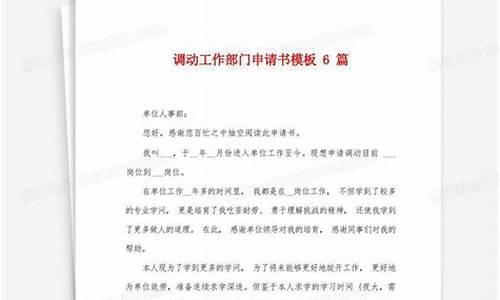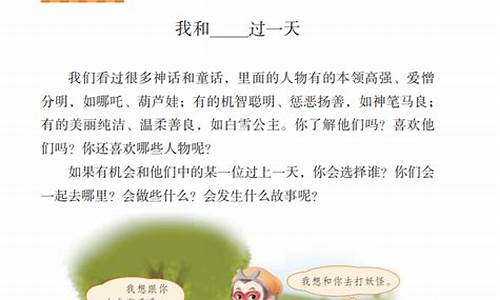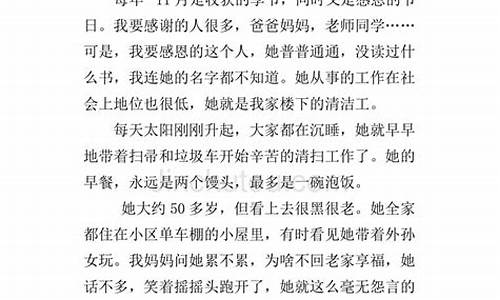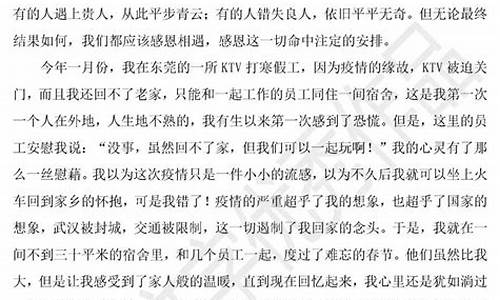农学论文参考文献_农学论文
1.农学专业考研难吗?
2.农学论文怎样和基因组学联系起来
3.农业国家级论文刊物有哪些呀?
4.本科论文盲审好过吗
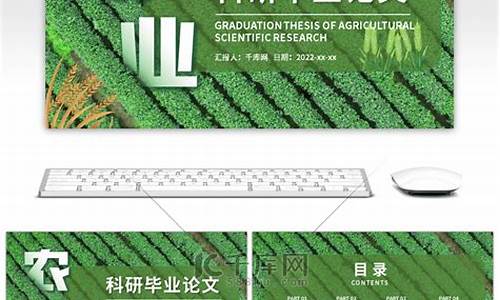
先介绍一下科学与技术的概念。
科学是整理事实,从中发现规律。科学是一种知识,是客观事物本质的揭示,是偶然中的必然性的揭示,是运动过程规律性的揭示,它是系统地反映事物真相的客观真理。
技术是为社会生产和人类物质文化活动服务的,供人类利用和改造自然的物质手段、精神手段和信息手段的总和。包括工艺技巧、劳动经验、信息知识和工具装备。
一、科技论文常见的类型,体裁与方法
(一)类型
1、软科学性论文(软件):是研究技巧,智慧,信息组织和领导的知识体系,是综合运用了自然科学,社会科学和哲学的理论和方法,对复杂的社会课题进行预测、规划、管理和评价,从整体上探求最优化的解决方案和决策。包括综合性评述,建设的决策和战略,建设的方针政策和途径,方案的评价和分析,预测和模型设计,认识和建议等。
2、硬科学性论文(硬件):是研究物质设备及其技术的知识体系。包括物质设备的设计、计算、建造、结构、测试和应用。
(二)科技论文常见的体裁
标题
作者姓名
邮编,工作单位,职务或职称
摘要
关键词
前言或引言
正文
结论
参考文献
(三)写法
1、标题:题目要尽可能揭示出论文的中心内容,并反映出论文的特点。用词简短明确。为此,标题应具备准确性,简洁性和鲜明性。
2、摘要:内容包括研究对象,工作目的,试验方法和研究的主要内容及主演成果的意义。
(1)报导性摘要:较长,一般250—300字。包括目的,范围,试验方法与设备,结果和结论。运用于应用性研究的硬件性论文。
(2)指示性摘要:叙述文章的精华,不涉及研究方法,结果和结论,一般30—50字。适用于综述、评价、分析等软件性论文。
3、关键词:目前论文在摘要后面一般都要列出文章中涉及并阐明概念的词,称为“关键词”,便于检索用。
4、前言或引言:作用是引出年论的问题的来龙去脉,回答为什么要写该论文。应包括研究的背景、目的、范围、方法和取得的成果及其意义。
5、正文:是科技论文的主体。
(1)内容包括由实验、观察、测度得到的数据;由调查研究得来的材料;根据数据和材料形成的观点。科技论文以观点为核心,观点由材料抽象而成,材料服务于观点,以达到材料和观点的统一。
(2)格局和体裁可分以下两种:
按认识循环的层次,按研究工作进程的顺序。实验再次研究的现象,或现象—再现象的外部条件—研究现象的内因和本质—探索现象变革的措施—实践验证。阐写时层次分明,一环扣一环,步步深入,紧扣文题。
将实验数据或材料综合融汇,提炼出典型的观点和脉络,通常是先介绍实验用材料、设备、方法等,汇集取得的结果综合整理,经过推理分析,归纳得出结论。
6、结论
结论是论文的归结,是论文最终总体的论点,是抽象出来的现象本质和规律。措词严谨、逻辑严密、文字鲜明具体,语句简炼明了。具体内容可包括:
(1)简述验证结论或分析讨论得出的最后论点。
(2)说明结论适用范围。
(3)说明研究成果的意义。
(4)对该项工作台的发展和展望。
7、参考文献
标明文章或书名、作者姓名、杂志名称、出版年月、出版部门。正文中引用他人的结论、调查、实验数据时,应在引用内容上角注上参考文献序号。
8、对外学术刊物要求除非外文标题、姓名、单位、摘要。
二、综合评述性文章
综述是某一科技领域在一定时期内进展情况的综合性评述文章,它又是反映作者本人见识的科技报告。综是文的基础,评是文的经纬。
综述论不是一般性的动态报导,是经作者阅读大量文献、资料后,以自己的研究或生产实践为基础,系统地总结专业领域在一定阶段的进展,并通过分析归纳而提出自己的见解的一种具有指导意义的工作。
1、综述一般应包括下列内容:问题的提出—历史发展—现状分析—趋向预测和改进建议。
2、写综述应注意下列各点。
(1)勿将综述与自己的某项研究工作台混杂为一篇文章,写成既非综述又非科研报告的文章,综述的重点是比较和评价,故对自己的研究工作进行评价是不适宜的。
(2)勿做第二手综述文章,也就是在别人的几篇综述的基础上加些个人见解而捏成的综述。
(3)切勿泛泛空言,充斥套话和形容词语,毫无参考价值,也无新的见解。
(4)材料和观点应统一,避免介绍材料过多而评述太少,具体的太少而议论过多。
(5)评述国外情况要面向国内,讨论过去和现在,要以现在为主。
(6)理论和实践应统一,放眼而不虚夸,严谨而不拘泥,既定量的生产数据为佐证,又有从长远发展与理论研究而提出的方向性论断。
(7)科技研究与经济效益的统一,要多从推广可行性方面提出估计和措施。
(8)要提纲挈领,突出重点。不要平铺罗列“各家之言”。综述的关键是精谈,一般细节应简略。
三、农业技术指导类文章
主要介绍重点农技推广项目和农业先进技术成果,传授先进的农业技术模式,针对生产实际问题提出指导性建议。
一般写法:就某个生产实际问题进行分析,提出解决办法。或介绍某个研究对象的特征特性,与周围环境的关系,提出配套应用技术。必要时需介绍经济效益。
1、病虫草害防治技术建议。介绍某种病虫草鼠害形态特征,发生规律、危害作物情况,提出综合防治技术建议。或某作物、某时期多种病虫草鼠害的识别及防治技术建议。发布病虫预测预报,并提出防治技术建议。
2、介绍农作物优良品种。主要说明品种特征特性,增产效果,配套栽培技术要点及适应区域。如果是育种报告,需啬材料组合及选育过程。
3、农作物栽培技术。介绍某种单项技术的应用效果,技术要点及有关注意事项。介绍某作物的特征特性,对环境条件的要求,提出综合(高产优质)栽培技术建议。
4、施肥技术。介绍某种肥料特性,或某种施肥技术,增产效果,施用技术。或谈某种作物需肥规律,提出合理施肥技术建议。
5、农业环保方面。可以探讨农田自然灾害的发生规律,治理办法,低产土壤的改良技术,农田污染的危害及治理方法。发展绿色食品、无公害食品生产技术等。
四、农业试验总结(报告)的写法
(一)试验名称:即试验的题目,包括试验年限和单位。
(二)正文内容
1、试验的目的和依据:简要叙述要研究解决的主要问题,对生产上和科学上有什么意义。
2、试验的材料和方法:简单扼要地正确叙述试验从那方面研究,都是什么内容,用了什么材料和方法。
主要应讲明:
(1)试验处理内容:各处理是什么品种或什么措施。
(2)试验地概况:土壤、土质、肥力、地势等。
(3)试验小区面积、排列方法、重复次数。
(4)田间措施:供试品种、整地、播种、施肥、管理、收获等方面的时间、措施。
(5)试验执行过程中出现的事故和发生的偶然均应简要说明。如施错肥、打错药、鼠雀牲畜食害、不测的天气灾害等。
3、试验结果分析:主要包括生育期调查、性状分析、产量分析、试验显著性检验等。
首先应将试验数据分类列出统计表格。然后分专题逐项分析。先分析增产效果显著的处理、与对照比较生育期差异、植株性状差异、产量差异究竟有多大,用文字简要说明,然后分析其它处理。
对那些比较重要的生育性可以拍出照片附在总结中。对那些有一定变化规律的数据,可以绘制出条形图、简单直方图、曲线图、点式图等。配合文字分析,增加透明变。
分析试验结果,应当条理分明,有重点地预以论述,每个专项问题要提得鲜明,推论必须合理。避免内容累赘,论点模糊,使人厌烦和糊涂。
当现象间、数据间或有关结果间发生矛盾时,如果不是资料的错误,应格外注意分析,重要的矛盾应同时提出,以供进一步研究。
4、结论:判断试验结果成功与失败,说明试验结果在生产上或科学上的作用和有关体会,在讨论中提出尚待明确的问题和今后进一步努力的方向。
五、有关投稿要求
1、选题及内容应与刊物所设栏目及报道范围一致。内容要有新意或具地方特色,避免与刊物发表的文章内容雷同。文稿力求语言精炼,论点明确,论据充分,数据可靠,论证合乎逻辑,结论正确。内容应注意保守国家机密。
2、写作格式。标题要提纲挈领,简明扼要;标题下写清作者的邮政编码、工作单位、职务(职称)和姓名;文稿章节分段按国家标准1、1.1、1.1.1……号码顺序编排。标题号顶格写,后面空1格。
3、表、图编绘要求。文稿中的表格和图不宜太多。表格用三线表形式,表题、表头文字表达与编制要完整精炼,表中内容不能与文章内容重复,数据要完整、准确;形态特征图或曲线坐标图用电脑(出激光样)或硫酸纸绘制,图中要有图例,文稿中要留出图位。
4、计量单位及符号使用标准。讲师单位用法定计量单位,在技术性稿件中用正体小写外文符号表示,不能再用下述括号内的汉字写法,如:
长度用km(公里)、m(米)、cm(厘米)、mm(毫米)、um(微米)、不再用里、丈、尺、寸、公尺、公分;
面积用k㎡(平方公里)、h㎡(公顷)、㎡(平方米)、c㎡(平方厘米)、m㎡(平方毫米);
体积用m3(立方米)、cm3(立方厘米)、mm3(立方毫米);
重量用t(吨)、㎏(千克)、g(克)、mg(毫克);
ppm停止使用,表示数量时改用10-6,表示浓度时改用mg/㎏。
考虑到广大读者的实际情况,面积单位仍可使用“亩”;
时间年、天、小时、分、秒用汉字书写。
5、数字用法规则。表示世纪、年代、年、月、日、时间(年份用全称),表示计量和有统计意义的数字,表示序数和编号中数字用阿拉伯数字;当数字作为词素构成定型词、词组、惯用语时,当表示农历时,相邻2个数字并列连手表示概数时,星期几、形容词前的数字、名词前的字“—”等用汉字数字。例如:三四天、七八十种、十滴水、二万五千里长征、相差十万八千里、正用二十日、一品红。阿拉伯数字范围号为“~”;百分数范围,前一个数的百分号“%”不能省略。
6、汉字及专用名词术语使用要求。文稿中汉字以新华字典为准,不得使用繁体字和自造字。专用名词术语要规范、标准,不得使用地方方言。专业名称要用学名,不得使用俗名、土名和别名,含量用剂型不能省略,商品名称只能在括弧内注明。
7、外文字母书写规则。文稿中外文字母需打字或用印刷体书写,并注明文种、大小写和正斜体、上下角字、数字以及易混淆的字母必须书写清楚。
8、正确使用标点符号。根据1990年3月国家语言文字工作委员会、中华人民共和国新闻出版署修订发布的《标点符号用法》,标点符号有点号、标号两在类,共16种。
点号7种:句号(。)、逗号(,)、顿号(、)、分号(;)、冒号(:)、问号(?)、感叹号(!);
标号7种:引号(“”)、括号(( ))、省略号(……)、破折号(——)、连接号(— —)、书名号(《》)、间隔号(·)、着重号(.)、专名号(__)。
9、文稿用钢笔在16开方格稿纸上抄写清楚,字迹工整,切勿潦草,标点使用要正确。也可提供计算机打印稿或软盘文稿(同等内容稿件优先录用,编辑部可直接扫描编排,或给编辑部发电子邮件,中国农技推广)。来稿文责自负,不得一稿多投,自留底稿,录用与否、恕不退稿。6个月未收到刊物录用稿件通知,作者可自行处理。不愿修改者请在来稿时一并声明。《黑龙江农业》不用油印、复印、复写稿件,不录用3个月可自行处理。
10、有关文章字数要求。《黑龙江农业》:综述、专论、工作研究等在2500字以内,也有达到3500字的。农业技术指导稿件一般在1000—2000字之间,也有达到3000—3500字的。农家之友栏目1000字以内。
《中国农技推广》:专题要文、厅局长论谈、科技论坛等一般不超过3000字,也有达到3500—5000字的。农业技术指导类一般1000—2000字,不超过3000字。
《农村实用工程技术》:技术稿件一般不超过2000字,少数为1000字或3000字。长篇文章讲座搞连载。可投作物种植、实施园艺、节水灌溉等栏目。
专业学术期刊:每篇论文(包括图表)以不超过5000字为宜,最多不得超过8000字。个别期刊充许登载字数(包括图表)在1—2万字以上的论文。特别欢迎短小精悍的文章;简报不超过2000字,研究通讯每篇限在700字以内。
11、来稿请在文章末写明第一作者简介,包括:姓名、性别、出生年月、职务、职称、工作单位、通讯地址、邮编、联系电话等。《中国农技推广》要求在信封上注明投稿栏目。
论文举例
我在前些年有关刊物上选择了一些写得比较好的文章作为范文,供大家参考。它们的特点是文章写得比较规范,用词准确,分析透彻,技术实用,有指导意义。
一、科技论文
1、软科学论文:
加入WTO对我国农技推广体系的影响与对策
作者:夏敬源,全国农业技术服务中心文化 邮编:100026,发表在《中国农技推广》2002年第3期10—12页。
内容:前言,1.当前我国农技推广体系与国际市场接轨存在的主要问题;1.1推广理念不适应;1.2职能定位不适应;1.3管理体制不适应;1.4推广方法不适应;1.5保障措施不适应;1.6法规法则不适应;2.加入WTO我国农技推广体系的影响分析;2.1间接影响;2.2直接影响;3.农技推广体系应对入世挑战的思路与对策;3.1创新推广理念;3.2科学定位职能;3.3理顺推广体制;3.4转换运行机制;3.5改进推广方法;3.6提高全员素质;3.7支持力度加大;3.8加强法制法规建设。5300多字。
2、硬科学论文
油桐尺蠖种群数量变化规律及动态模型研究
作者:湖南省常德市林业局 赵星、周艳初、喻传明
湖南省保靖县林业局 余中虎
发表在《农业系统科学与综合研究》1993、9(2)、124—126、130页。
内容:摘要,关键词,1.材料与方法;1.1调查点的位置;1.2调查方法;1.3种群动态模型建立方法(谱波分析就是富里叶级数);2.结果与分析;2.1油桐尺蠖蛹种群数量变化规律;2.2油桐尺蠖蛹种群动态模型的建立及检验;3.结论与讨论。参考文献有4条,附英文标题姓名,3500多字。
二、综述类文章
例1:以色列现代农业印象
作者:湖南省农业技术推广总站站长、高级农艺师、朱世俊,邮编410005,发表在《中国农技推广》2000年第3期14—15页(海外窗口)。
内容:前言,1、水与农业灌溉;2、品种与商品现代化;3、农业与温室;4、农业技术与农技推广。大约3000多字。
例2:国内外农业科技动态简介
作者:桦川县农业技术推广中心于振东
发表在19年桦川县农业技术培训教材中。
内容:一、国外农业科技动态简介:1、培育良种;2、农业生产日趋工厂化;3、田间管理向自动化过渡;4、合理施肥灌溉;5、用科学方法防治病虫草害。二、国内农业科技新成果简介:1、粮豆薯栽培技术;2、经作园艺栽培技术;3、植保技术;4、土肥技术;5、农业工程技术:(1)大型机械;(2)小四轮配套机械;(3)植保机械;(4)灌溉设施;(5)抗旱技术;(6)培育新品种;(7)电子技术在农业生产中的应用。
三、农业技术指导类文章
例1:大豆菟丝子的防治
作者:刘汉民 江苏国营新曹农场植保站 邮编224246,发表在《中国农技推广》2000年第4期43页(植物医院)
内容:前言,1.大豆被害症状;2.防除菟丝子的措施;2.1精选豆种;2.2轮作换茬;2.3深翻土壤;2.4肥料充分腐熟;2.5宽行条播;2.6人工拔除;2.7药剂防除;2.7.1土壤处理;2.7.2茎叶处理。
例2:中国香稻及栽培技术
作者:湖北省武六市农业技术推广中心彭志文,邮编435400,发表在《中国农技推广》2002年第2期30页。
内容:1.主要特征特性;1.1米质;1.2生育期;1.3形态特征及产量;2.主要栽培技术。大约1200字。
例3:西芹的特性及栽培技术
作者:辽宁东亚集团公司邵长顺
辽宁东亚国际种苗有限公司李博
发表在《黑龙江农业》2000年第1期31页
内容:前言(西芹简介),1.对环境条件的要求;1.1西芹对温度要求严格;1.2西芹对水分要求严格;1.3西芹对土壤要求严格;1.4西芹对肥料(营养)要求严格;2.栽培技术;2.1栽培季节;2.2播种育苗;2.3合理定植;2.4田间管理;2.5适时收。
例4:水稻机械深施肥技术的应用与效果
作者:黑龙江省虎林市农业技术推广中心 刘为民
黑龙江省虎林市农机化技术推广站 姜国胜
发表在《中国农技推广》2002年第3期56页。
内容:前言(技术简介);1.机械深施肥技术在我市的应用;1.1试验跟踪调查情况;1.1.1试验处理;1.1.2试验条件;1.1.3秋季考种测产情况;2.机械深施肥技术作用特点;2.1提高化肥利用率;2.2化肥深施后能明显提高水稻单位面积产量;2.3施肥均匀,减少挥发,满足水稻生育需要;2.4省工省肥,减少污染;3.操作中应注意的问题;3.1作业地块要平整,田内无稻草等杂物;3.2秧苗要壮;3.3肥料标准;3.4肥箱防水、肥料防潮;3.5每天作业完成必需要清理肥箱。
例5:盐碱对水稻的危害及治理方法
作者:全素荣等,辽宁省凌海市植物保护站,邮编121200,发表在《中国农技推广》2002年第2期49页(沃土原野)。
内容:前言(盐大地地概况);1.盐碱对水稻生产的危害;1.1危害基本情况;1.2危害程度;2.治理方法;2.1选种抗盐碱优良品种;2.2培育壮秧,增强抗盐碱能力;2.3建立标准化田间工程,确保灌排畅通;2.3.1单排单灌;2.3.2深沟排水;2.4洗盐碱;2.5科学施肥;2.6调节盐碱2.7培肥地力,改良土壤。大约1200多字。
四、试验总结(报告)
例1:大豆窄行密植不同品种(品系)的增产潜力分析
作者:王成,黑龙江省农科院合江农科所,邮编154000,发表在《黑龙江农业》1999年第6期第30页。
内容:前言;1、试验材料及方法;2、结果分析;3、结论。三年试验,参试12个品种。
例2:必宁特防除水稻插秧田杂草试验研究
作者:于振民 绥化地区植检植保站,邮编152054,发表在《黑龙江农业》2000年第2期23—24页,约1300字。
内容:前言;1.供试药剂;2.试验处理;3.试验设计及调查方法;3.1除草效果调查;3.2水稻安全性调查;3.3田间测产调查;4.试验结果(4.1、4.2、4.3);5.结论(5.1、5.2、5.3)。
农学专业考研难吗?
Agriculture
Technologies
900 Million Farmers in China
The history of reform and opening up has witnessed three calls for the development of rural markets. 900 million farmers constitute the world's largest group of consumers and he created the biggest business opportunity in China.
In the face of the dual competitive pressure posed to China by the hi-tech advantage of the developed countries and the price advantage resulted from the currency devaluation in surrounding countries, China has clearly indicated: From the long-term point of view, while actively exploring international markets, it is essential to actively develop the domestic market, particularly the rural market. This is a strategic choice in conformity with China's national conditions.
The rural market is the most dynamic, practical pivotal point in expanding domestic demands and boosting economic growth. Inadequate effective demand has become the greatest hindrance to China's current economic development. In the series of macro-control measures to be adopted in the second half of this year, exploring the rural market is regarded as "a rope for capturing the tiger". Experts' estimation indicates: Every 100 billion yuan worth of final consumption realized in rural areas will generate 235.6 billion yuan worth of consumption demand for the entire national economy.
It is also a brand-new starting-point in the readjustment of economic structure and the readjustment of product mix. Today, the buyer's market has penetrated to every corner of China's economy. Of the 900-odd important industrial products, the utilization rate of over half of the production capacity is less than 50 percent, structural readjustment is thus imminent.
In the effort to successfully open up the rural market, industrial enterprises must produce commodities geared to rural demands; and commercial enterprises must skillfully build smooth and swift marketing channels.
There are many difficulties confronting the effort to explore rural markets. Reasons for this are many. For example, some local s he inadequate understanding of the importance and urgency of exploring rural markets, fear difficulty and lack confidence in accomplishing this task; quite a number of industrial and commercial enterprises still harbor the concept of "valuing cities while belittling the countryside", this is manifested in the fact that the product mix is incompatible with the rural market demand, the variety of commodities on sale is single and farmers find it inconvenient to buy.
In fact, the rural market has enormous potential and there are many forable conditions for developing the rural market. So long as industrial and commercial enterprises really attach importance to the rural market, carefully study farmers' demands, exert great efforts to do a good job in the work of exploring the rural market well, they can definitely achieve the anticipated results.
Industrial enterprises stress production of commodities geared to market needs, while commercial enterprises emphasize smooth and fast marketing channels.
Efforts should be made to develop new sales methods, such as chain-store, agency and distribution center and to establish various forms of sales networks wherein industry and commerce, commerce and commerce, town and country, state-owned commerce and individually-run and privately-run commerce join hands. Chinese business people will he ample scope for their abilities in rural markets.
The key to success in exploring rural markets lies in increasing farmers' income. It is necessary to open up the rural consumer goods market to allow farmers to buy things; and it is also necessary to first open up the rural agricultural produce market, so that farmers' purses will be bulging
Farmers' income is stepping into the period of a new round of growth at reduced rate.
Slow increase in farmers' income is the greatest factor thwarting efforts to explore rural markets. When farmers' purses are not so bulging, increase in actual consumption demand will be slow. To increase farmers' income is, in essence, to enhance the rural economy's adaptability to the socialist market economy. In the opinions of authoritative persons, it is essential to get hold of two links: one is "what to grow". Farmers he to grow farm crops easy to yield added value.
To do so, it is necessary to readjust and optimize the agricultural structure, develop high-efficiency and high-value-added characteristic agriculture. Second is "how to sell the produce". To increase farmers' income, it is essential to solve the problem concerning ties between the farmer and the market, farmers should be enabled to smoothly enter the big, ever-changing market. This requires development of industrial management of agriculture, and cultivation of a wholesale market system, intermediary service system and information service system.
Cultivating a wholesale trading market system by making use of the advantages of tradition, regional location, resources and industry is an important aspect in invigorating the flow of agricultural produce and industrial products. This has been proved by the experience of many localities.
--------------------------------------------------------------------------------
China May Hold Future of Food Technology
By Dennis Avery
Senior fellow and Director, Center for Global Food Issues at the Hudson Institute
Is it possible the First World will give China a virtual monopoly in agricultural biotechnology, destined to be one of the most valuable technologies of the 21st century?
He the United States and Europe thrown away billions of dollars in agriculture-related biotech earnings and hundreds of thousands of clean, high-tech research and support jobs?
The United States and Europe he spent billions of dollars doing basic research in genetically modified crops and animals to make foods that are better-tasting, more nutritious and kinder to the environment.
Will China now step in and charge the United States and Europe steep royalties for the right to grow the new organisms that result from this research?
Those are all strong possibilities, in the wake of the environmental group Greenpeace's stunningly swift and successful campaign to ban genetically modified foods and crops.
First World investors were afraid to be caught in another controversy like tobacco, or another set of baseless class-action lawsuits like the controversy over silicone breast implants.
They've bailed out on agricultural biotechnology long before s dared act. To duck the controversy, Monsanto's orphaned agricultural biotech unit will be dumped into a hostile stock market along with its multibillion-dollar laboratories and patents.
Ditto for the big agricultural biotech units of Europe's Novartis and Zeneca. Look for layoffs from all three. And don't expect the laid-off scientists to land jobs at public research institutions.
The publicly funded research labs will be even more gun-shy of agricultural biotechnology now than the private sector. The erstwhile scientists will he to lay aside their doctorates and start new careers.
A lucky few may find jobs in human medical biotech, which the environmental movement has not attacked yet. This has nothing to do with risks to people or the environment. Despite media hype, no real dangers related to biotech foods he ever been documented.
But Greenpeace seems to want a smaller, poorer human population, so they're willing to frighten the world back into the scientific Dark Ages. The one thing certain is genetic engineering in food production will not disear.
When the astronomer Galileo published his proofs in 1632 that the Earth revolved around the sun, the Catholic Church put him under house arrest. The church had declared the Earth the center of the universe. But people could never look at the sun in quite the same way again. They had new knowledge.
The First World may be so comfortable it can afford to pass up biotech foods. But the Third World is still struggling to provide adequate diets for its growing population.
For the developing world, the choices are stark. The can either use biotechnology to raise yields, grow more low-yield crops by clearing tropical forests or import food from the West. Given those choices, biotech foods look awfully attractive.
Most Third World countries are too small or poor to advance agricultural biotechnology on their own. Countries like Brazil and Argentina could assemble the scientific resources but they're afraid of losing their export sales to nervous European and Japanese consumers.
India might like to develop high-yielding biotech crops to ease its cropland shortage, but its own prickly activists are still arguing over hybrid seeds. They're likely to hamstring Indian biotech into the near foreseeable future.
China is the one country in the world with the scientific power to carry biotechnology forward in agriculture, the urgent need for massive amounts of additional food and feed and no need to allow unfounded food scares to be published in its newspapers.
China already has over 1 million farmers growing genetically modified cotton, corn and soybeans because of lower costs. Anyone who dous China's ability to carry forward good science is ignoring the country's fabulous history and its recent ballistic missile tests.
"Golden rice" by itself may be enough to secure genetically engineered foods' reputation among Chinese consumers. Asian women are at high risk of birth complications because of iron deficiency due to the phytate in the rice they eat.
Golden rice counteracts the phytate and provides ample dietary iron. It also contains plenty of Vitamin A, also lacking in many rice-culture diets.
The International Rice Research Institute is already breeding golden rice genes into popular rice varieties for the people of Asia and Africa. Is Greenpeace callous enough to try to frighten poor rice-culture consumers away from golden rice and back to childhood blindness?
Using biotechnology, China should be able to produce highly attractive foods, such as healthier fats for cooking, allergy-free nuts, more tender steaks and, at last, a tasty off-season tomato.
Every vitamin and mineral needed by the human body could be engineered into our foods, sing consumers billions of dollars in food supplements.
When First World consumers find out about such goodies, China can export them or charge farmers in other countries a fee to grow them.
The biotech crops will also feature sharply higher yields, especially on marginal farmlands where drought and acid soils currently limit production. Greenpeace should cheer this, since it will directly help se Asian tropical forests.
First World farmers will lose a significant part of their export potential, of course, if Third World farmers can produce higher yields and more desirable specialty foods through biotechnology. At the moment, that seems to be the price they pay for farming in a rich, overfed country.
农学论文怎样和基因组学联系起来
难。农学考研这么低的分确实是一个诱惑,但是分低的背后隐藏的是招考院校和招考人数较少,这也就意味着选择会受限。
再者就是专业课的问题,对于已经工作的小伙伴而言,其实学习能力已经大不如前,之前又没有接触过农学的专业知识,在复习专业课的时候基本很难理解里面的内容,所以300分的专业课想考好还是很难的。
扩展资料一级学科分为:作物学、园艺学、农业利用、植物保护、畜牧学、兽医学、林学、水产。从一级学科的命名我们可以看出,基本包括了你所了解的农业(俗称种地)以及你不清楚的植物保护,林学和听起来很有美感的园艺学。
一级学科里包括的专业有:作物栽培学与耕作学、作物遗传育种、果树学、蔬菜学、茶学、土壤学、植物营养学、动物营养与饲料科学、草业科学、特种经济动物饲养(含蚕、蜂等)、林木遗传育种、森林经理学、园林植物与观赏园艺等26个专业。
农业国家级论文刊物有哪些呀?
农学论文怎样和基因组学联系起来
一、作物栽培学与耕种学
1.作物生理生化
2.作物生态
3.作物栽培理论与技术
4.作物生长检测与诊断
5.作物化控理论与技术
6.耕作制度
7.精确农业与数字农业
8.作物系统模拟
9.生态农业与持续农业
10.设施农业技术
二、作物遗传育种
1.植物育种的原理与方法
2.植植物遗传的研究和利用
3.植物细胞遗传与育种
4.植物数量遗传与育种
5.植物分子遗传与育种
6.植物基因组学的研究与分子育种
7.植物基因工程,细胞工程
8.科学与技术
9.生物信息学
10.种质基因组学
三、植物病理学
1.植物病原细菌学
2.植物学
3.植物病原线虫学
4.植物病原生物功能基因组学
5.植物病原生物互作基因组学
6.植物防卫信号传导及基因组学
7.分子和生理植物病理学
8.杀菌剂毒理
9.生物防治与基因工程农药
10.植物检疫学与入侵生物学
11.植物抗病基因工程
四、农药学
1.农药合成
2.农药残留及环境毒理
3。杀虫剂毒理及抗药性
4.杀菌剂毒理及抗药性
5.杀草剂毒及应用
6.天然产物农药
五、农业昆虫与害虫防治
1.昆虫生理生化与分子生物学
2.昆虫毒理与抗药性
3.昆虫基因组与生物信息学(限考数学)
4.昆虫生态与预测预报
5.昆虫分子生态与进化
6.昆虫行为与化学生态
7.入侵生物与生物防治
8.昆虫分类学
9.水生昆虫学与淡水生态
10.植物检疫学与害虫综合治理
本科论文盲审好过吗
请查看,注意四年一换!
《中文核心期刊要目总览》
第六编:农业科学
1土壤2中国农业科学3中国兽医学报45西南农业学报6中国兽医科学7农药8安徽农业科学9中国兽医杂志10土壤学报11上海农业学报12中国土壤与肥料13土壤通报14中国农学通报15福建林学院学报16生态环境17西北农业学报18浙江林学院学报19节水灌溉20江苏农业科学21西北林学院学报22作物学报23江苏农业学报24南京农业大学学报25玉米科学26浙江农业学报27华中农业大学学报28杂交水稻29广东农业科学30中国农业大学学报31棉花学报32湖北农业科学33湖南农业大学学报34大豆科学35新疆农业科学36华南农业大学学报37核农学报38贵州农业科学39河北农业大学学报40中国棉花41河南农业科学42江西农业大学学报43作物杂志44水土保持学报45河南农业大学学报46植物保护47水土保持通报48吉林农业大学学报49植物检疫50水土保持研究51沈阳农业大学学报52园艺学报53中国水土保持54四川农业大学学报55果树学报56农业工程学报57安徽农业大学学报58中国蔬菜59灌溉排水学报60云南农业大学学报61北方园艺62农业机械学报63中国油料作物学报64中国饲料65中国水稻科学66农业生物技术学报67草地学报68麦类作物学报69植物遗传学报70草业学报71中国烟草科学72黑龙江畜牧兽医73蚕业科学74植物病理学报75北京林业大学学报76草业科学77中国生物防治78甘肃农业大学学报79中国家禽80植物保护学报81广西农业生物科学82饲料研究83环境昆虫学报84东北农业大学学报85水产学报86中国植保导刊87新疆农业大学学报88饲料工业89中国草地学报90中国生态农业学报91淡水渔业92动物营养学报93中国农村水利水电94水利渔业95动物医学进展96干旱地区农业研究水产科学98中国畜牧杂志99大连水产学院学报100中国水产101中国畜牧兽医102中国预防兽医学报103科学养鱼104中国水产科学105东北林业大学学报106海洋渔业107海洋水产研究108中南林业科大学报109林业科学110水产科技情报111上海水产大学学报112中国果树113中国南方果树114植物营养与肥料学报115华北农学报116林业科学研究117西北农科技大学报(自然科学)118农机化研究119世界林业研究120福建农林大学学报(自然科学)121中国农机化122竹子研究汇刊123浙江大学学报(农业与生命科学)124农药学学报125中国森林病虫126扬州大学学报(农业与生命科学)127畜牧与兽医128林业管理129山东农业大学学报(自然科学)130渔业现代化131浙江林业科技132内蒙古农业大学学报(自然科学)133食用菌学报134林业实用技术135南京林业大学学报(自然科学)136中国食用菌137畜牧兽医学报
本科论文盲审比较好通过,通过率大概在90%以上。
本科论文盲审:
本科论文盲审是指学校将本科生的毕业论文送到校外的专家进行评审,以保证论文的质量和客观性。一般来说,本科论文盲审的通过率比较高,大概在90%以上。只要论文不是写得太差,能够符合基本的格式、字数、查重等要求,没有明显的逻辑错误或抄袭现象,就有很大概率能够通过。
按学科分布来说:
盲审通过率最低的是工学,通过了为69.9%,其次为哲学,通过率为73.8%,低于80%的学科还有艺术学,农学,教育学,法学达到平均值,通过率最高的是医学,为%,经济学,理学的通过率也比较高。
按评分标准来说:
按照盲审专家的评分标准来说,主要考察论文的选题意义、研究方法、理论依据、数据分析、结论建议、创新性等方面。具体的评分标准可能因学校而异,一般会给出一个评分表或者评语表供专家参考。
以上数据出自知乎。
论文盲审的原因:
1、保证论文的质量和客观性
论文盲审的目的是保证论文的质量和客观性,避免导师或学校的主观偏见或利益影响对论文的评价。通过论文盲审,可以提高论文的学术水平和价值,促进学术交流和创新。
2、避免评审专家受到作者或导师的影响
论文盲审的方式是将论文送到校外的专家进行评审,评审专家不知道论文的作者和导师,也不会透露自己的身份和评分。通过论文盲审,有助于避免评审专家受到作者或导师的影响或压力,也有助于避免作者或导师对评审专家的质疑或不满。
3、节省评审专家的时间和精力
论文盲审的规则和流程可能因学校或专业而异,一般来说,盲审是随机抽取的,不是所有的论文都需要进行盲审。通过论文盲审,有助于节省评审专家的时间和精力,也有助于提高评审效率和公平性。
声明:本站所有文章资源内容,如无特殊说明或标注,均为采集网络资源。如若本站内容侵犯了原著者的合法权益,可联系本站删除。




